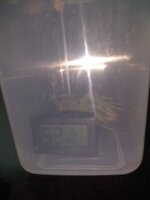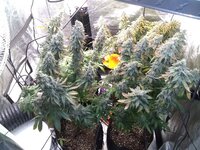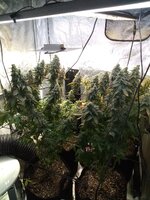Mr.S is spot on on!
It’s a great option to go with. Holds no nutritional value so, it’s easily re used from one grow to the next. You can also use it in home gardens as well.
In the past, when coconuts were harvested for their delicious meat and juice, the coconut husk was considered a waste product. All of the material from the husk to the inner shell of the coconut was a discard product…until people realized it had many applications in gardening and home products.
Everything in between the shell and the outer coating of the coconut seed is considered coco coir. There are two types of fibers that make up coir — brown and white. Brown coir comes from mature, ripe coconuts and is a lot stronger, but less flexible. White fibers come from pre-ripe coconuts and are far more flexible, but much less strong.
Almost all of the coconut coir used for hydroponics is brown coir, as it’s processed even more after initial harvesting.
It Retains moisture and provides a good environment – coco coir is one of the most effective growing media for water retention out there. It can absorb up to 10x its weight in water, meaning the roots of your plants will never get dehydrated. There’s also a lot of growing media for roots to work through, promoting healthy root development.
It’s environmentally safe, and insect neutral, as most garden pests do not enjoy settling in coconut coir, making it yet another line of defense in your integrated pest management system for your garden.
make sure you Ph to 5.8
along with the benefits of growin in coco coir, comes disadvantages as well.
coconut coir is inert, meaning that it has no nutrients within it. It may look like soil, but it is not soil. This means you will need to add hydroponic nutrients and control the pH when using coco coir. Growing in soil isn’t too different though, as many gardeners amend their soil constantly throughout the growing season anyways.
May need additional supplementation – you may find your plants short on calcium and magnesium when using coconut coir, so supplementing with “Cal-Mag” may be necessary.
Needs rehydration – most coco coir products are shipped in dry, compressed bricks. While this saves on shipping cost, it adds labor to your growing process as you’ll need to rehydrate them before you can use them in the garden. This isn’t too hard though!
Mixes can be expensive – garden suppliers know that coco coir can be annoying to work with sometimes, so they’ve started to offer coconut coir mixes. This saves a lot of time, but is pretty expensive — and making your own mix isn’t too difficult.
you take the good with the bad and your setting your self up for success!



















